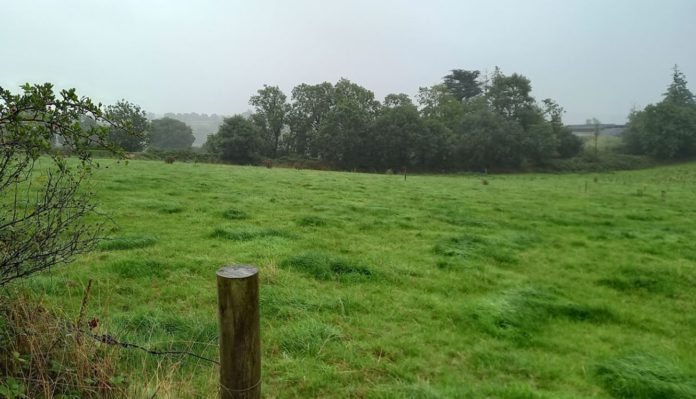In this article, we look at leasing land long-term covering what a lease includes and tax incentives.
Leasing land long-term has been adopted in farming practices in Ireland since the 1990s.
Each year, the number of land leases in Ireland has increased, showing the importance of this agreement between farmers.
A land lease is a written legal agreement between a lessor (landowner) and the lessee (active farmer). Both parties must sign a lease agreement.
This document serves as useful legal protection to each party involved.
Long term land leasing in Ireland has become more prevalent in recent years. Land lease prices soared between 5% to 15% in 2021. These figures see quality grazing group earning in the region of €220/ac to €270/ac.
In 2022, the demand for land has increased, seeing an ultimate drive in the price of land leases throughout the country.
What does a lease include?
A lease typically includes the terms and conditions of the agreement for the period outlined in the lease.
There is a range of lease agreements, which are widely available. These agreements may require adjustments to suit both the lessor and lessee.
For this, we recommend that you seek professional advice.
Some details in the lease include:
- Terms and conditions;
- The payment, including method and frequency of payment;
- Insurance;
- Basic Payment Entitlements;
- Stamped by Revenue and registered with the Property Services Regulatory Authority;
- Include conditions surrounding farm buildings and how they will or will not be included in the lease;
- The intended land use, including the maintenance of the land;
- Measures to involve prevention of subletting.
All land leases should be registered by the lessee with the Property Services Regulatory Authority. There is no charge for registering the lease.
Tax incentive
You pay Stamp Duty on the lease of land situated in Ireland. Land includes agricultural land and building on the land.
Stamp Duty is chargeable regardless of the period of the lease.
To claim tax relief incentives, the lease must be stamped by Revenue. 1% of the annual rental fee is the rate of stamp duty charged. This is charged within 30 days of the commencement of the lease.
The stamping process is completed through the ROS Revenue website. The stamped document is attached to the lease.
Young farmer relief
Stamp duty on non-residential land transfers is charged at 6% of the value of the asset. There is also a relief for leases of farmland, specifically for young farmers to reduce this to 1% of the market value.
To obtain this relief, you must hold a specified qualification, such as a Teagasc Level 6 Green Certificate.
Otherwise, you should obtain such qualification within four years from the date the lease commenced.
Alternatively, you should spend at least 50% of your time farming land.
To avail of this relief, the lease should have commenced on or after July 1st, 2018, and have a minimum of a 6-year and maximum of 35-year duration.
You must either farm the land on a commercial basis and hold an agricultural qualification or otherwise spend 50% of your normal working time farming on a commercial basis.
It is also acceptable to lease the land to a farmer who has met the above criteria, in order to qualify for this relief.
The duration matters
The duration of a lease can be long-term, for more than five years or a short-term period of fewer than five years. To qualify for income tax incentives, the land must be leased for a minimum of five years but can be leased for up to 25 years.
The duration of the lease will determine which income tax threshold will apply.
Inheriting the family farm
Should you inherit the family farm, or land through a will, you may be liable to pay Capital Acquisitions Tax. The relief against this taxation is Agricultural Relief.
To qualify for Agricultural Relief, an asset test is conducted. This is based on whether 80% of the assets owned on the date of transfer, is agricultural assets.
Tax Incentives for long-term land leasing
| Term of Lease | Max Tax Free Income/year |
| 5-7 years | €18,000 |
| 7-10 years | €22,500 |
| 10-15 years | €30,000 |
| >15 years | €40,000 |
[Source: Section 664 Taxes Consolidation Act 1997]
How to obtain relief from Capital Acquisitions Tax
Capital Acquisitions Tax is charged at a rate of 33% on gifts or inheritances made on or after December 5th, 2012.
To avail of CAT agricultural relief, you must be the requirements of the farmer test, which includes owning 80% of agricultural assets.
In addition, you must hold an agricultural qualification AND farm the property for 6 years.
Alternative options to avail of CAT relief include spending 50% of your working time on the farm, otherwise leasing the agricultural property for a minimum of six years, to a person who meets the criteria outlined.
Basic Payment Scheme (BPS) Entitlement Protection
BPS entitlements can be leased with the land intended to be leased. If this is the case, this should be included in the lease agreement.
The transfer of these entitlements is completed online through your AgFood.ie account, with the help of your agricultural advisor.
It is worth considering the addition of a clause in the lease agreement that in the event of the tenant not receiving his/her BPS entitlements – this should not influence the agreement in place and the payments owed to the lessor.





